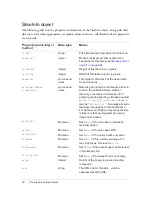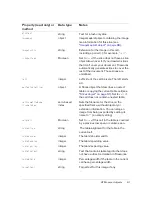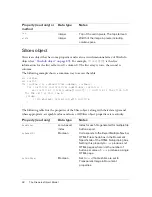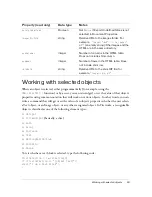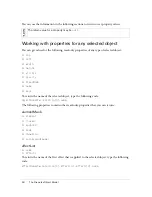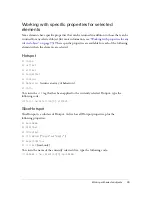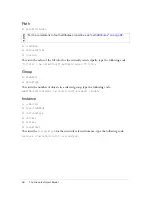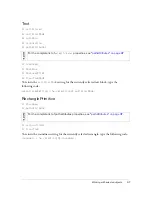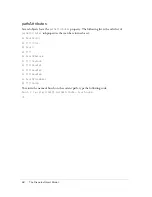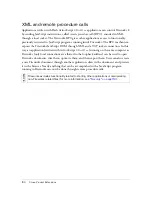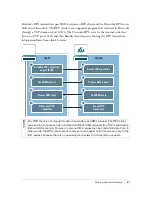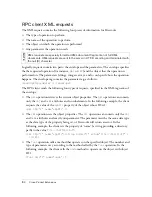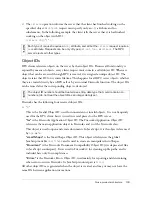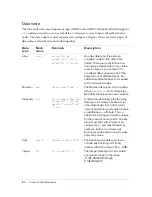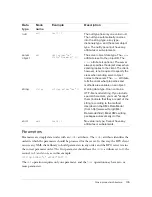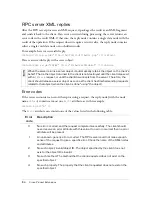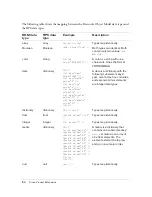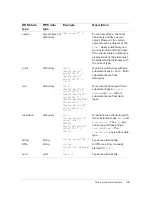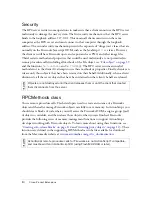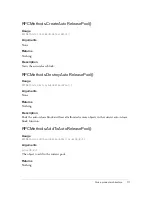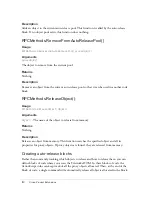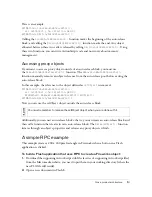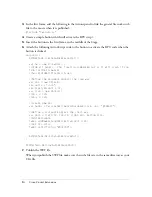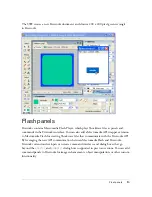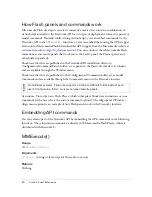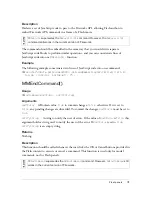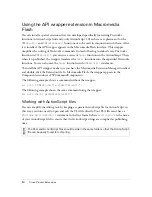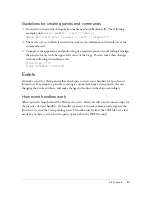
104
Cross-Product Extensions
Data node
The data node is the most important type of XML node in RPC. Methods called through the
func
operation need to act on actual data or references to server objects identified in data
nodes. The data nodes are used as parameters and parts of replies. There are several types of
data nodes, as described in the following table.
Data
type
Node
name
Example
Description
array
array
<array><string
value="stuff" /><int
value="50" /></array>
An array data type. It is simply a
container node for the other data
nodes. There are no restrictions on
how many subelements it can contain
or which types it can contain. The
contained data nodes may be of the
same type or of different types. No
additional attributes have to be added
to the contained nodes.
Boolean
bool
<bool value="true" />
The Boolean data type. It can contain
either
true
or
false
and nothing else.
Note that the values are case sensitive.
dictionary
dict
<dict><double key="foo"
value="5.0" /><string
key="bar" value="fred" /
></dict>
A dictionary data type. Like the array
data type, it is simply a container for
other data nodes. Each direct child
node of a dictionary node must contain
an additional
key
attribute. The
key
attribute is a string and must be unique
for the given dictionary node. The key
string must start with a letter or an
underscore (_) and may followed by
numbers, letters, or underscores.
Dictionary nodes can be used to pass
objects by value.
float
double
<double value="1.2345" />
The floating-point data type. It can
contain any floating-point (real)
number within the range 1.7e +/- 308.
integer
int
<int value="50" />
The integer data type. It can contain
any signed integer in the range
-2,147,483,648 through
2,147,483,647.
Summary of Contents for FIREWORKS 8-EXTENDING FIREWORKS
Page 1: ...Extending Fireworks ...
Page 4: ...4 Contents ...
Page 358: ...358 Fireworks JavaScript API ...
Page 372: ...372 Index ...

